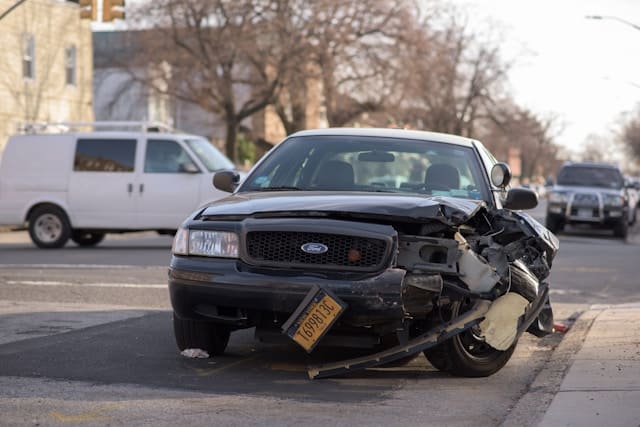Photo by Lance Grandahl on Unsplash
If you have been injured by another driver in a car accident, there will likely be an insurance company on the hook for compensating you for the injuries and other damages you suffered in the accident. This is ultimately a good thing for injured parties because insurance companies offer a more reliable path to compensation. Unfortunately, however, insurance companies usually only payout to the policy limits. In this article we’ll explain how policy limits work, and how you might be able to collect compensation above and beyond those limits.
How Do Insurance Policy Limits Work?
A car insurance policy is a kind of liability insurance, and liability insurance policies always come with limits. Policy limits represent the maximum dollar amount the insurance company is responsible for in terms of losses arising from an incident that triggers coverage.
For example, a car insurance policy that has a $50,000 limit means that the insurance company is only going to pay out $50,000 to anyone who suffers injuries and/or vehicle damage in an accident you cause. If there were $100,000 in damages, the insurance company is not going to pay the excess $50,000. This money, if awarded by a judge or jury, will have to come from somewhere else.
Car Insurance Requirements in New York
Each state sets its own minimum auto insurance coverage requirements. In New York, in addition to having no-fault personal injury protection, drivers are required to have insurance that at least covers the following:
– $10,000 in property damage
– $25,000 for bodily injury and $50,000 for death for a single person involved in an accident
– $50,000 for bodily injury and $100,000 for death for two or more people in an accident
Unfortunately, despite these mandatory requirements, some motorists still only carry minimum liability coverage that fall below or barely cover the amounts required by the State, which is not always enough. Supplemental uninsured/underinsured motorist (SUM) coverage provides extra protection that will pay your losses.
Insurance companies are required to offer SUM coverage, so if your policy already includes it, you can file a claim with your own insurance company to receive compensation beyond the other driver’s limits.
Do I Have SUM Coverage?
If you obtained a New York auto insurance policy after June 18, 2018 , your policy will automatically include 1 SUM coverage equal to your bodily injury liability coverage limits, unless you specifically opted out of it.
However, if you obtained insurance before June 2018, you might not have this, or it may only be equal to the liability coverage minimums. It is a good idea to review your policy and consider adding SUM coverage if it is already included.
How Do I File a Claim for SUM Coverage?
To file a SUM claim, the first step is notifying the insurance company as soon as you can. If you do not promptly notify them of your desire to use SUM coverage to pay for your injuries, the company may be able to deny your claim.
Next, you will need to assess how much your claim is for. Regardless of how much coverage the other party has, you can only make a claim up to the limits of your SUM policy. In other words, if you have $100,000 in SUM coverage, you can only recover $100,000 regardless of whether the at-fault driver was completely uninsured or had $50,000 in liability coverage available.
To establish how much your claim is worth and prove your need for SUM compensation, you are going to need evidence that the other driver was at fault, that they were uninsured or underinsured, and that the accident caused your losses. Ultimately, this process probably seems simple enough since it involves dealing only with your insurance company, but it can still be a grueling fight to prove how much you are entitled to.
Discuss Your Accident with an Attorney TODAY
Getting the compensation you deserve after policy limits are reached is no small feat, but you do not have to go it alone! The experienced personal injury attorneys at Shalom Law are here to help guide you through this intimidating process to ensure that you get the compensation you deserve! Call us today for a consultation: (718) 917-9474.
This memorandum relates to general information only and does not constitute legal advice. Facts and circumstances vary. We make no undertaking to advise recipients of any legal changes or developments.







